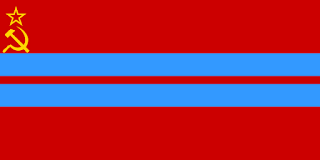 |
| Turkmenistan's national flag |
It has been slightly tweaked since then, the major change being the addition of the two olive branches at the base of the vertical stripe. This was made after the United Nations accepted Turkmenistan's status of permanent neutrality in 1995.
Green and red have long been venerated by the Turkmen. The vertical red stripe contains five basic carpet gul. A gul is a medallion-like design element typical of traditional hand-woven Turkmen carpets. These guls represent the five houses or tribes of Turkmenistan, which, from top to bottom are Teke, Yomut, Arsary, Chowdur, and Saryk.
It is the only national flag that boasts carpet designs. This is unsurprising when one considers these two Turkmen proverbs: 'Water is a Turkmen's life, a horse is his wings, and a carpet is his soul' and 'Unroll your carpet and I shall see what is written in your heart.'
The crescent signifies the hopes of Turkmens for a bright future, while the five pointed white stars represent the country's five velayat, or regions: Ahal, Balkan, Dashhowuz, Lebap and Mary.
 |
| Turkmen SSR flag, adopted 1952 |
It has been suggested that the blue lines represented the Amu Darya (Oxus) river that runs along the northeastern border of Turkmenistan. The other blue stripe may stand for the river Atrek, which forms the border between Turkmenistan and Iran, or the Caspian Sea, the western border of Turkmenistan.
Related posts:
Uzbek Flag: Colours and Symbols
Kyrgyz Flag - Homage to Nomadic Traditions
Turkmenistan: Tracking Down Mosaics
Ernst Neizvestny's Last Soviet Sculpture - Ashgabat, Turkmenistan